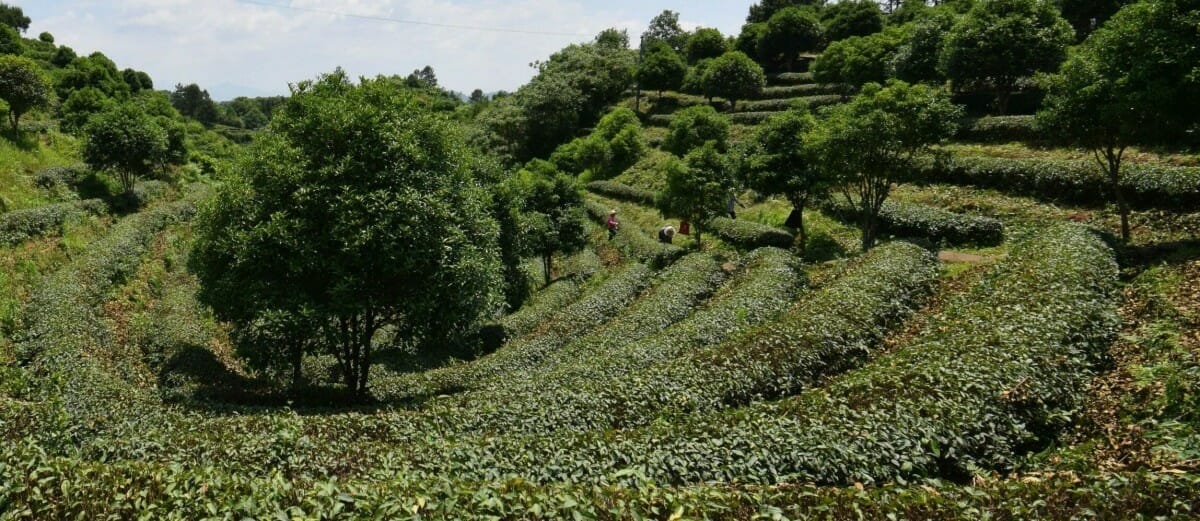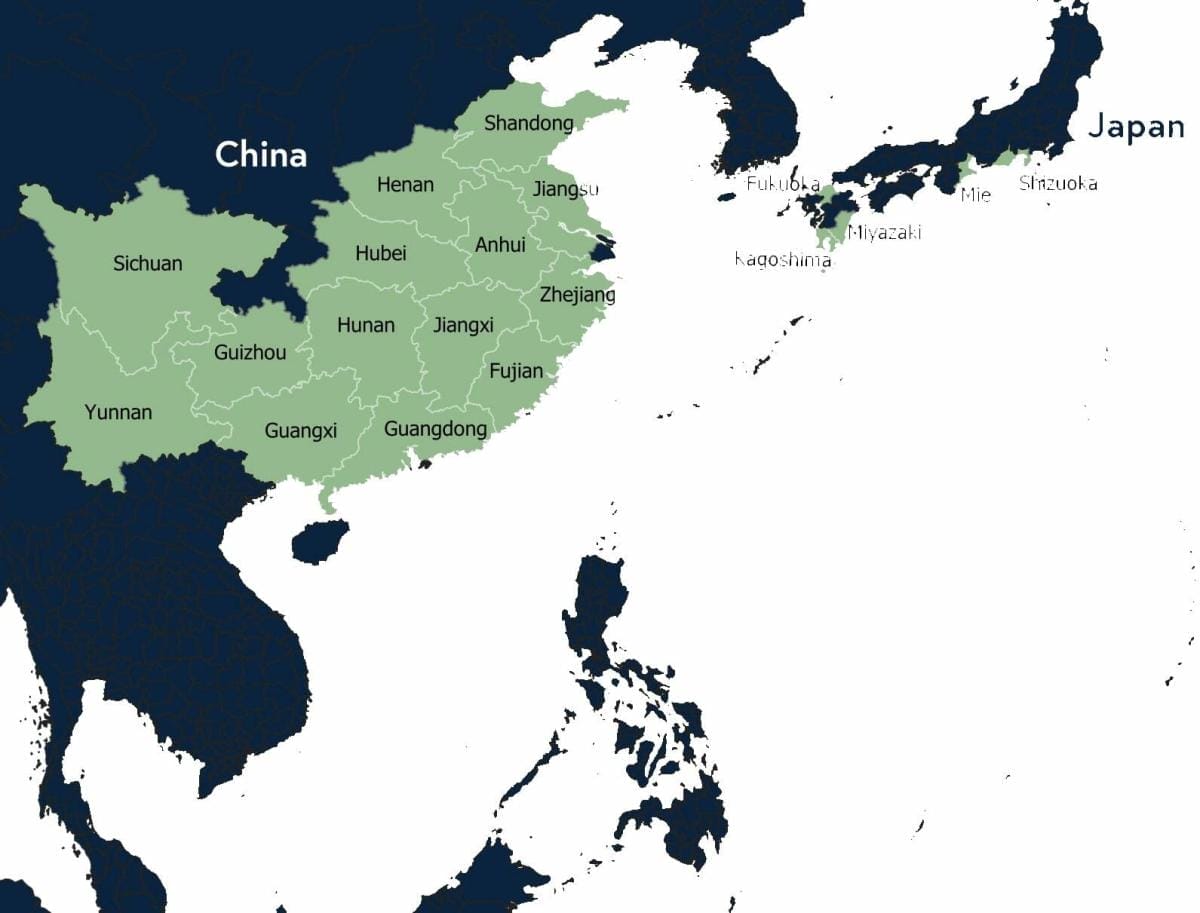No products in the cart.

Origin Profile: China
China is the largest producer of tea, and most of it is consumed domestically. China is home to many very old and unique varieties and processing styles.
| Total Production | 2.6 Million Tons |
| Approximate Breakdown by Type | White: 1% Green: 65% Yellow: < 1% Oolong: 10% Black: 10% Fermented: 12% |
| Common Varieties: | Da Ye (Big Leaf) & Da Bai (Big White) Many Local Varieties |
| Anhui | The Yellow Mountains in Anhui produce classic, crowd pleasing teas including the green tea Huangshan Maofeng and Keemun, a black tea. |
| Fujian | White Peony and Silver Needle tea from Fuding in Fujian are regarded as the highest quality white teas. The Wuyi Mountains produce some the highest quality oolongs and black teas. Lapsang Souchong and Jin Jun Mei are some of the most desireable black teas while Yancha or Rock Oolong are praised for their minerality, florality, and roasted sweetness and body. Tieguanyin is produced in Anxi county, along with many other oolongs, but this tea is the most consumed oolong tea in China. |
| Guangdong | The Phoenix mountains produce a wide array of oolongs that are the result of many different varieties and slight variations in processing. |
| Yunnan | Yunnan is home the the Assamica subspecies of tea. This larger-leafed tea is used for classic Gongfu black tea production, as well as for Pu’er or fermented tea. |
| Zhejiang | The most poular green tea is Longjing or Dragonwell tea from this region. Gunpowder tea produced here is the classic base for morroccan mint blends |

Historical evidence suggests tea was first cultivated in China 6,000 years ago when it would be eaten as a vegetable. Approximately 2,000 years ago is when tea began to be consumed as a beverage by pressing the roasted dried leaves into cakes, before grinding into a fine powder known as muo cha (matcha) for consumption. During the Ming Dynasty about 700 years ago, tea standards were shifted by the emperor away from cakes and muo cha to loose leaf tea steeped in water instead.
In Europe, tea grew in popularity in the 17th century and China remained the world’s only grower. The British demand grew and they began trading for the tea using Opium, and, after a large public health crises in China, the first Opium War ended with ceding of Hong Kong from China to the British.
China remains the world’s largest producer of tea and it produces the widest range of tea types and qualities. From the same region you may find many different teas with unique cultivars and nuanced traditional processing methods. Internal consumption of tea is also high, with 85% of China’s tea production being consumed domestically and even more being imported from around Asia and Africa.
Tea in China is not static. Certain types from traditional areas continue to be produced in new regions with mixed results. New cultivars continue to be developed and new processing types continue to emerge.
In Europe, tea grew in popularity in the 17th century and China remained the world’s only grower. The British demand grew and they began trading for the tea using Opium, and, after a large public health crises in China, the first Opium War ended with ceding of Hong Kong from China to the British.
China remains the world’s largest producer of tea and it produces the widest range of tea types and qualities. From the same region you may find many different teas with unique cultivars and nuanced traditional processing methods. Internal consumption of tea is also high, with 85% of China’s tea production being consumed domestically and even more being imported from around Asia and Africa.
Tea in China is not static. Certain types from traditional areas continue to be produced in new regions with mixed results. New cultivars continue to be developed and new processing types continue to emerge.



